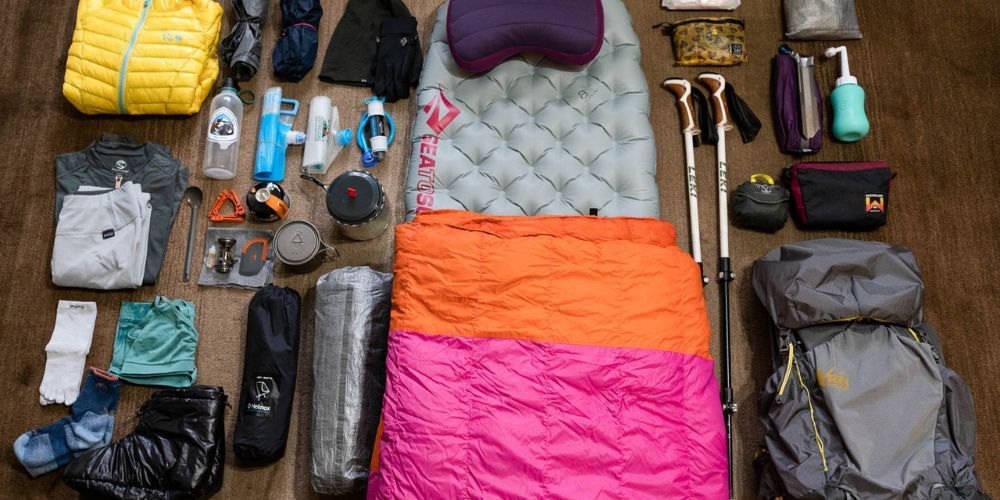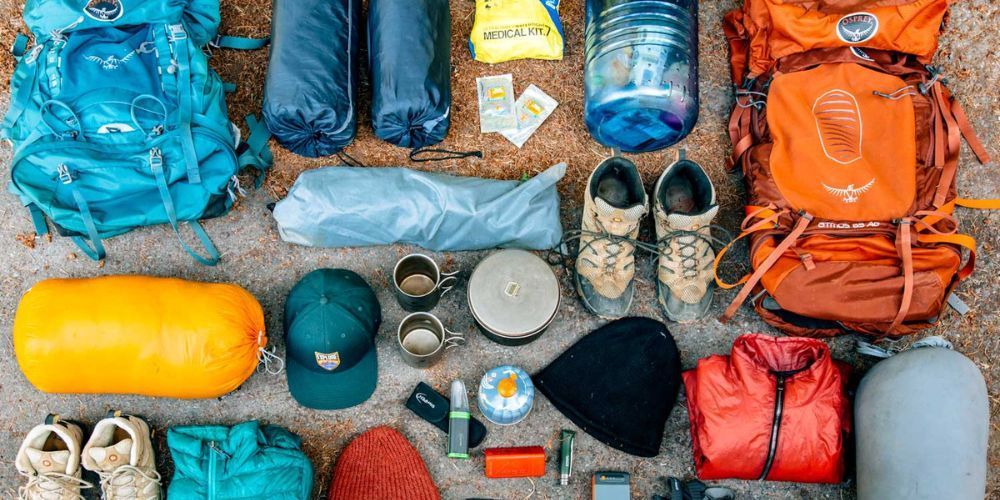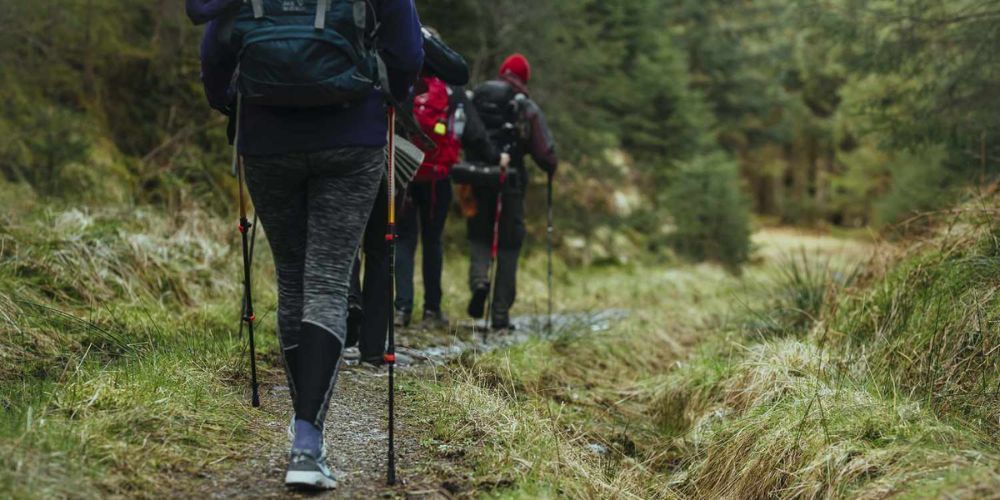Trekking Poles: A Comprehensive Guide to Choosing the Perfect Gear for Your Outdoor Adventures
Choosing the right trekking poles can transform your hiking experience from grueling to enjoyable. Not only do they reduce knee strain by up to 25%, as research shows, but they also boost your stability on uneven terrain. Imagine trudging up a steep mountain path or navigating slippery rocks—proper trekking poles can make these challenges less daunting and more manageable.
To ensure you select the best gear for your adventures, this guide combines insights from seasoned hikers, meticulous product reviews, and detailed comparisons of key features like locking mechanisms and grip materials. You might be surprised to learn about some overlooked aspects that significantly impact comfort and durability. So let's explore together how the right trekking poles can enhance your next outdoor journey.
Our thorough review of trekking poles highlights the MSR DynaLock Ascent Carbon as the best overall choice, known for its lightweight construction, superior locking and adjustability features, and compact packed size. Additionally, the Leki Cressida FX Carbon stands out as an excellent women's-specific option, boasting ergonomic cork grips and premium design. Both options offer exceptional performance for hikers of all levels.
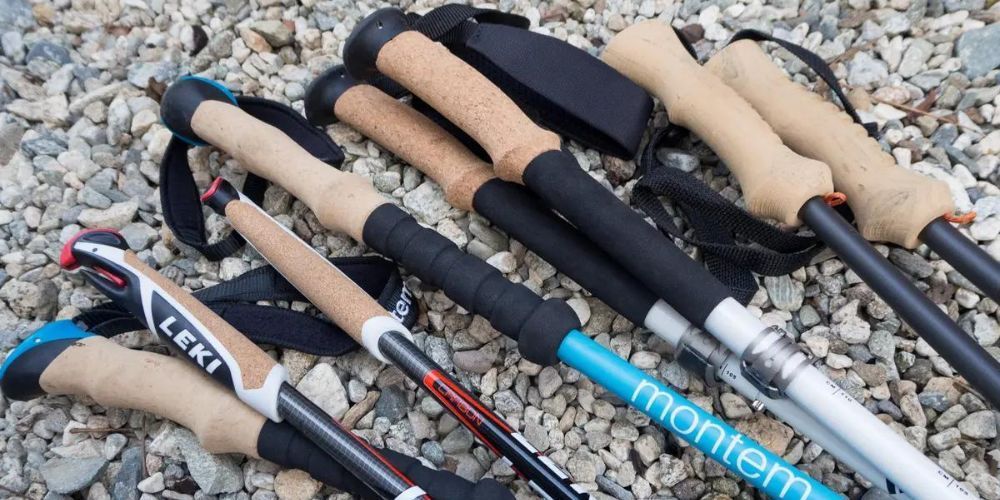
The Importance of Trekking Poles
Trekking poles are often underestimated in their significance. They're not just for hikers who need extra support—these sturdy companions serve a multifaceted purpose, contributing to both your safety and comfort during outdoor adventures. As you venture onto rugged trails, they become an extension of your body, significantly impacting your hiking experience.
The benefits of trekking poles extend far beyond mere stability and balance. Research indicates that using these poles can decrease the impact on your knees and joints by up to 25%, offering significant relief during lengthy hikes or on rough, uneven terrain. With each step, the poles absorb some of the downward force, reducing strain on your lower body and allowing you to maintain energy over extended periods.
In fact, these unassuming poles can be likened to silent companions, offering vital support as you navigate challenging landscapes. Their assistance in rhythm and pacing makes steep ascents and descents more manageable, providing an added layer of safety as you conquer inclines and declines.
Consider the times you've trekked through uneven paths or descended steep slopes. The aid provided by trekking poles is invaluable, enhancing your stride and preventing potential slips or missteps. By distributing some of the weight away from your joints and relying on the poles for stability, you experience a newfound sense of control and confidence on your outdoor excursions.
Picture a hiker facing a rocky descent with loose gravel underfoot—here, trekking poles become indispensable tools for ensuring stability and reducing the chance of falling. Additionally, navigating an uphill climb becomes less daunting with the extra support offered by these trusty companions.
It's like having an experienced guide walking alongside you, offering a steady hand when the terrain becomes unpredictable—a reassuring presence that transforms what might seem like an insurmountable challenge into a feasible journey.
The impact of trekking poles on the overall hiking experience is profound. Beyond alleviating physical strain, they provide mental reassurance and enhance the enjoyment derived from immersing oneself in nature's splendor.
As we probe deeper into optimizing your outdoor adventures, let's now turn our attention to the key features to consider when selecting the ideal trekking poles.
Key Features to Consider
When it comes to choosing the perfect trekking poles , several key features are essential to consider, significantly impacting your hiking experience. Let's dive into these vital elements and understand their significance.
Locking Mechanism
The locking mechanism of a trekking pole is critical for its stability and adjustability during a hike. A secure locking system ensures that the pole remains at a fixed length and doesn't collapse unexpectedly, providing confidence and support on various terrains. There are two popular options: lever locks and twist locks. Lever locks are usually preferred for their reliability and ease of adjustment, making them ideal for hikers who often need to change the length of their poles on the go.
Grip Material
The grip material of your trekking pole can significantly affect your comfort during long hikes. Cork grips are favored for their ability to absorb sweat without becoming slippery and also mold to the shape of your hand over time, providing a personalized fit that enhances comfort during extended periods of use. Foam grips offer a soft, cushioned feel and excellent sweat absorption, while rubber grips provide insulation from cold surfaces and dampen vibration. Choosing the right grip material can make a noticeable difference in your overall hiking experience.
Pole Shaft Material
The material of the pole shaft plays a significant role in determining the overall weight, durability, and performance of the trekking pole. Aluminum and carbon fiber are the two primary options available, each with distinct characteristics. Aluminum trekking poles are known for their sturdiness and durability, making them well-suited for rugged terrains and heavy-duty use. On the other hand, carbon fiber trekking poles are exceptionally lightweight, offering greater ease of use over long distances but may be less robust in extreme conditions. Understanding the pros and cons of each material will help you make an informed decision based on your hiking preferences and environmental demands.
Choosing between these critical features requires careful consideration of your hiking needs and personal preferences. By taking into account the locking mechanism, grip material, and pole shaft material, you can ensure that your selected trekking poles align perfectly with your outdoor adventures, providing reliable support and comfort throughout your journeys.
Benefits of Using Trekking Poles
Trekking poles are a lot more than just an accessory; they are an invaluable tool that provides a wide range of benefits when you're exploring the great outdoors. Let's start with the most obvious one - stability.
Enhanced Stability
Picture yourself navigating a rugged, rocky trail or crossing a snow-covered slope. Trekking poles offer additional points of contact with the ground, significantly reducing the risk of slipping and falling. These sturdy poles provide a sense of security and balance, especially in challenging terrains where maintaining stability is crucial for safety. By planting these poles firmly into the ground, you create a wider support base, effectively enhancing your overall stability and giving you added confidence to tackle even the trickiest paths.
The enhanced stability provided by trekking poles isn't just about preventing accidents; it also allows you to move more confidently and efficiently, letting you focus on enjoying the scenery and the journey itself without constantly worrying about losing your footing.
Reduced Fatigue
Another significant benefit of utilizing trekking poles is reduced fatigue. By transferring some of your weight to your arms as you hike, these poles can alleviate some of the burden on your legs, particularly during long treks or when traversing uphill and downhill terrain. This redistribution of weight minimizes stress on your lower body, leading to less muscle fatigue and a decreased risk of strain or injury.
For instance, when ascending a steep incline, properly utilized poles can assist in propelling yourself forward and upward with greater ease. Conversely, when descending, they provide crucial support and help absorb some of the impact from each step, ultimately lessening the strain on your knees and joints.
Potential Health Benefits
Moreover, the use of trekking poles offers potential health benefits beyond just aiding your physical performance. Engaging your upper body during hikes adds an extra dimension to your workout routine. By supporting yourself with these poles, you engage your arm and shoulder muscles, contributing to improved posture while promoting overall upper body strength. Additionally, utilizing these muscles contributes to burning more calories and enhancing cardiovascular endurance during your trek.
In essence, incorporating trekking poles into your outdoor excursions not only enhances stability and reduces fatigue but also presents an opportunity to transform your hiking experience into a holistic full-body workout – all while ensuring safer, more enjoyable adventures in nature.
As we have explored the multiple advantages that trekking poles bring to outdoor adventures, let's now take a closer look at the various materials and design options available in these essential hiking companions.
Materials and Design Options
When it comes to trekking poles, the materials and design are crucial in enhancing your hiking experience. Aluminum and carbon fiber are the primary options for pole shaft materials. Aluminum is known for its sturdiness, weighing around 20 ounces per pair, while carbon fiber models offer a lighter alternative at approximately 13 ounces per pair, albeit with a higher price tag.
While aluminum may be favored by those seeking durability, carbon fiber is the choice for trekkers prioritizing lightweight equipment. The clear distinction between these materials plays a significant part in determining the best trekking pole type for an individual's outdoor activities.
Grip Design
Another crucial factor to consider is the grip design of the trekking pole, which significantly impacts your hiking experience. High-quality grips, such as those found on Leki Cressida FX Carbon trekking poles, are ergonomically designed to provide added comfort and reduce hand fatigue during long hikes. The right grip can make a substantial difference, especially during extended use.
The main grip materials used are cork, EVA foam, or rubber. Each material offers distinct advantages related to grip comfort and sweat absorption. For example, cork grips absorb sweat well while providing a natural feel, whereas foam grips offer ultra-soft cushioning and excellent absorption properties. On the other hand, rubber grips insulate from cold and absorb vibration effectively. Understanding these grip materials is crucial in selecting the most suitable pole for your specific needs.
For instance, if you are planning a long hiking trip where sweaty palms might become an issue or if you frequently traverse snowy terrains, selecting trekking poles with rubber grips could be particularly beneficial due to their insulation properties.
Choosing the right material and grip design for your trekking poles can significantly enhance your outdoor experience by ensuring comfort, stability, and efficiency throughout your adventures.
As we continue our exploration of essential features for trekking poles , let's dive deeper into the critical aspects of adjustability and length that can greatly influence your hiking experience.
Adjustability and Length
When it comes to trekking poles , finding the ideal length is essential for comfort and efficiency during your outdoor excursions. The right length will provide the best support for your body as well as adapt to various terrains, making your hiking experience more enjoyable.
The Ideal Length for Trekking Poles
The ideal length for your trekking pole will depend on a few factors, including your height, the type of terrain you'll be traversing, and your personal comfort. For example, when walking on flat terrain, adjusting the pole to elbow height is recommended. However, when tackling uphill treks, shorter poles are often preferred for better control and balance. This variation in length helps you optimize your posture and exertion level based on the incline and surface. It's like having a versatile tool that adjusts to meet your needs as you journey through different landscapes.
Adjustable-length poles are especially valuable in this regard, offering a range of lengths (such as 100-120 cm) to accommodate diverse users and terrains. These adjustable poles provide flexibility to adapt to varying conditions, making them an excellent choice for those who explore a wide range of trails and share their gear with others.
Benefits of Adjustable Trekking Poles
Research has shown that using trekking poles can reduce impact on the knees by up to 25% when utilized correctly. This notable reduction in stress on the joints can significantly enhance the endurance of hikers, especially during long-distance or challenging hikes. Adjustable trekking poles play a crucial role in this, allowing users to fine-tune the pole height based on the terrain and their own biomechanics.
Furthermore, adjustable poles are designed to be versatile across different activities and users, making them a practical investment for outdoor enthusiasts. Whether you're hiking through rocky trails or assisting in balancing over river crossings, having the flexibility to modify the pole length ensures proper support and stability throughout your adventure.
Imagine being able to swiftly adjust your trekking poles from a longer setting during ascent to a shorter configuration when descending steep slopes. This adaptability directly impacts your comfort and safety on rugged terrains, giving you the freedom to conquer diverse topographies without jarring impacts on your body.
Having explored the advantages of adjustable trekking poles , let's now shift our focus to understanding various features of these versatile tools for outdoor exploration.

Tips for Using Your Poles
Trekking poles can make a world of difference when you're out on the trails, offering stability, balance, and taking some weight off your legs. But to get the most out of them, here are some pointers to consider:
Proper Posture and Technique
Good technique is crucial to getting the most from your poles. When ascending a slope, plant both poles at the same time before taking a step. This gives you added power as you push yourself forward. Conversely, when descending, alternating each pole with each step will help maintain your balance and reduce the impact on your knees.
Storage and Accessibility
When not in use, collapsing your poles and securely fastening them to your backpack reduces the risk of accidentally getting them snagged on tree branches or rocks. It also helps to keep your hands free during more technical parts of the trail.
Furthermore, practicing mindful posture while using your poles ensures that you maximize their benefits. The recommended hand grip position is slightly above 90 degrees, providing an ergonomic angle that aids in propelling yourself forward. Keeping an ideal pole length based on your height (about 110-115% of your height) is crucial for maintaining a comfortable and effective arm swing.
Reducing Impact on Joints
In addition, using your poles to lessen the impact on your joints can ease the strain during both ascents and descents. By distributing the weight more evenly across your arms and legs, you're effectively reducing the pressure on individual joints, ultimately minimizing fatigue.
Adapt to Terrain
Finally, being adaptable is key. For uphill climbs, shorten your poles to allow for more forceful pushes as you ascend. Conversely, lengthening them for downhill treks helps provide additional support while maintaining a secure footing.
By staying mindful of these tips while using your trekking poles, you'll not only increase their efficiency but also minimize wear and tear on your body during long hikes. Trekking poles are incredible tools when used correctly, so take advantage of their benefits by integrating these techniques into your hiking routine.
As you leash onto the wisdom of using trekking poles effectively, it's time to turn our attention to selecting the perfect pair that aligns with your specific outdoor pursuits.
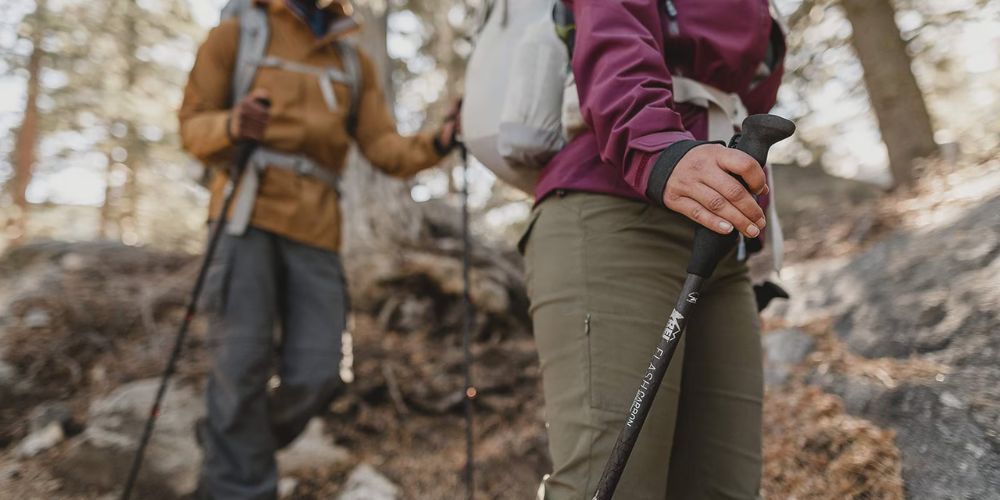
Choosing the Right Pair
Selecting the right trekking poles can significantly enhance your hiking experience. First and foremost, it's important to assess your trekking needs, as this will guide you in determining which type of poles best fit your requirements.
If you frequently tackle rugged and challenging terrains, consider tough and durable aluminum poles from reputable brands such as Komperdell for a reliable choice. On the other hand, if weight is a major consideration, exploring ultralight options that provide ease of use and portability without compromising on strength could be beneficial.
Budget Considerations
It's crucial to have a clear understanding of your budget when exploring trekking pole options. Entry-level models can come with a price tag around $50, offering basic functionality without breaking the bank. However, investing in higher-end versions priced at $200 or more with advanced shock absorption technology could greatly benefit your overall trekking experience for frequent and intense usage of the poles.
In addition to considering technical specifications and pricing, dive into user reviews from outdoor gear websites or forums. These real-world experiences often provide invaluable insights into the durability, practicality, and performance of trekking poles. By incorporating feedback from other hikers who have tested these poles in various terrains and conditions, you gain a broader understanding of how different models perform in real-world scenarios.
Armed with a better understanding of these essential considerations, you are better equipped to choose trekking poles that align perfectly with your individual needs and preferences for a more enjoyable and fulfilling outdoor adventure experience.
Finding the perfect pair of trekking poles is essential for an optimal hiking experience. By considering your trekking needs, budget, and real user feedback, you're well on your way to finding the ideal companion for your outdoor escapades.
Nature's Playbook
As an Amazon Associate I earn from qualifying purchases.




